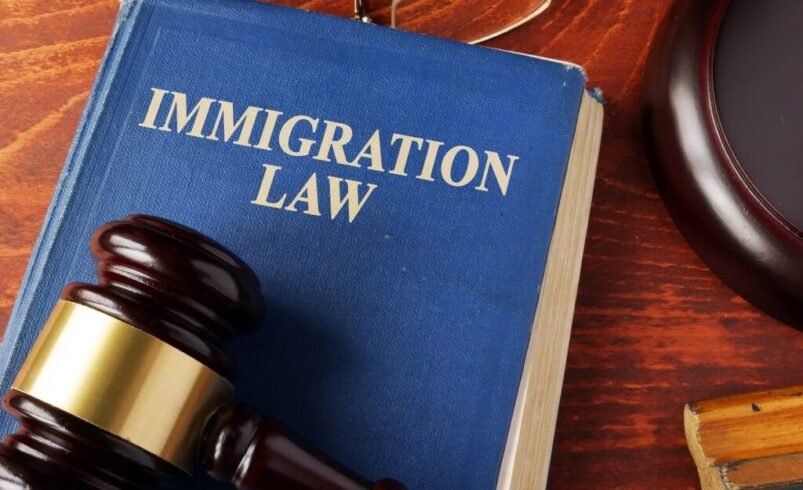6 Essential Steps to Confirm Your Naturalized or Derived Citizenship Status

Have you ever wondered if you’re already a U.S. citizen without even knowing it? It might sound surprising, but some people acquire citizenship automatically through parents or the naturalization process. Figuring out if you fall into this category isn’t as complicated as it seems—but it does require knowing the right steps to take. Whether you’re applying for a passport, looking to secure certain rights, or just want clarity on your status, confirming your citizenship is an important move. So, how do you start? Let’s walk through the process together.
Understanding Naturalized and Derived Citizenship
Before diving into the steps, let’s clear up what these terms mean. A naturalized or derived citizen is someone who becomes a U.S. citizen through legal processes rather than being born in the country. Naturalization typically involves applying as an adult, meeting residency requirements, and passing a citizenship test. Derived citizenship, on the other hand, is automatic for certain individuals through their parents’ citizenship, often when they’re minors. Knowing which category you fall into helps guide the rest of the process.
Step 1: Review Your Birth and Parental Records
The first step is gathering documentation that relates to your birth and your parents’ citizenship status. If you were born abroad but your parents were U.S. citizens, you might have automatically acquired citizenship at birth. Look for documents like:
- Your birth certificate (especially if it lists U.S. citizen parents)
- Parents’ birth certificates or naturalization certificates
- Consular Reports of Birth Abroad (if applicable)
If you can’t locate these documents, consider reaching out to the appropriate state or federal agencies for copies. Solid documentation lays the groundwork for confirming your status.
Step 2: Check Your Parents’ Naturalization Dates
Timing matters when it comes to derived citizenship. If you were under 18 when at least one parent naturalized, and you were living in the U.S. as a lawful permanent resident at that time, you may have automatically become a citizen. Review your parents’ naturalization certificates to confirm their dates of citizenship. Pay close attention to the timing in relation to your age and residency status back then. If you’re unsure about these details, a certified copy of the naturalization certificate from U.S. Citizenship and Immigration Services (USCIS) can clarify things.
Step 3: Examine Your Immigration Records
Your own immigration history is equally important. If you immigrated to the U.S. as a child with permanent resident status, you’ll need to verify when and how you entered the country. Key documents to review include:
- Permanent Resident Card (Green Card)
- I-551 stamp in your passport
- Any immigration paperwork from USCIS
These records help establish whether you met the conditions for automatic citizenship through your parents. Keep all documentation organized—it’ll make the next steps much smoother.
Step 4: Verify Citizenship Through USCIS or the Department of State
If your documents suggest you might be a citizen but you’re still not sure, the next step is to request official confirmation. You have two main options:
Apply for a Certificate of Citizenship
If you believe you derived citizenship through your parents, filing Form N-600 with USCIS is the way to go. This form provides official recognition of your status and is useful for getting a passport or other legal benefits.
Apply for a U.S. Passport
Sometimes, applying directly for a passport through the Department of State is the quickest route. If your documentation is sufficient, approval of a passport application essentially confirms your citizenship. Whichever path you choose, double-check the requirements to ensure you include the correct forms and supporting documents.
Step 5: Prepare for Potential Interviews or Requests
Occasionally, USCIS or the Department of State might ask for additional information or an interview to confirm your citizenship claim. If this happens:
- Bring original documents and certified copies to any appointment.
- Be ready to explain your family’s immigration history.
- Stay calm and honest—officials are there to verify details, not to trick you.
Having all paperwork in order beforehand makes this step less stressful and ensures things move along efficiently.
Step 6: Safeguard Your Citizenship Documents
Once you’ve confirmed your status, it’s essential to keep your citizenship documents safe. Misplacing vital records can cause headaches down the road. Consider:
- Storing documents like your Certificate of Citizenship or U.S. passport in a secure location (a fireproof safe is ideal).
- Making certified copies for reference, while keeping the originals untouched unless needed.
- Updating records with other institutions (like the Social Security Administration) once your citizenship is confirmed.
Keeping everything organized saves time if you ever need to present proof of citizenship again.
Why Confirming Your Citizenship Matters
Confirming your citizenship isn’t just about having a piece of paper—it’s about unlocking the full rights and privileges that come with being a U.S. citizen. From voting in elections to obtaining federal benefits, knowing your status ensures you can fully participate in civic life. It also eliminates uncertainty, especially when applying for jobs, traveling, or dealing with legal matters that require proof of citizenship. The process may involve some paperwork and patience, but the peace of mind is well worth it.



